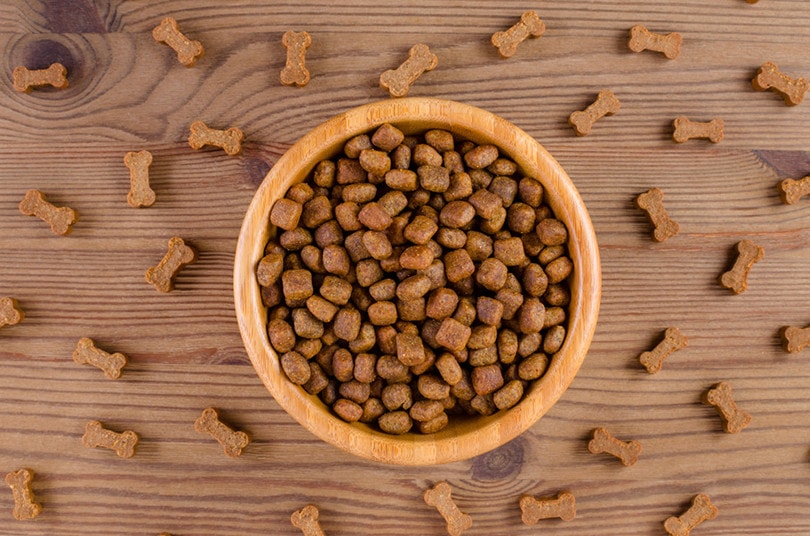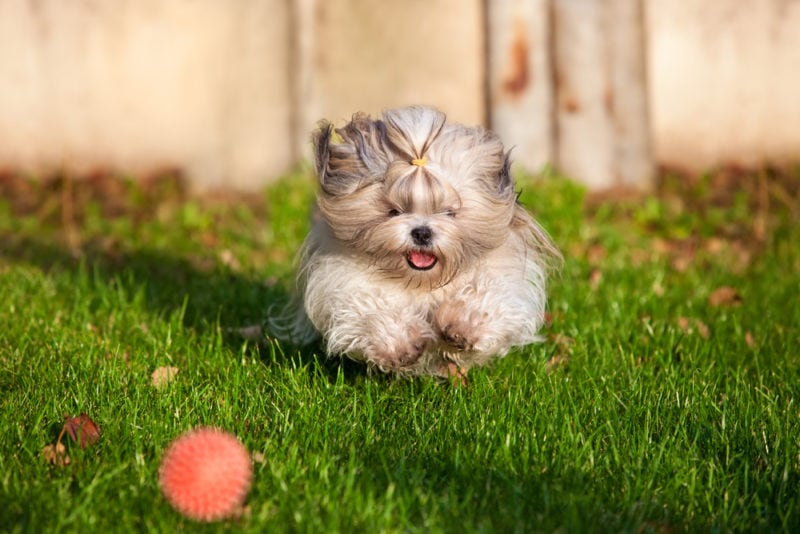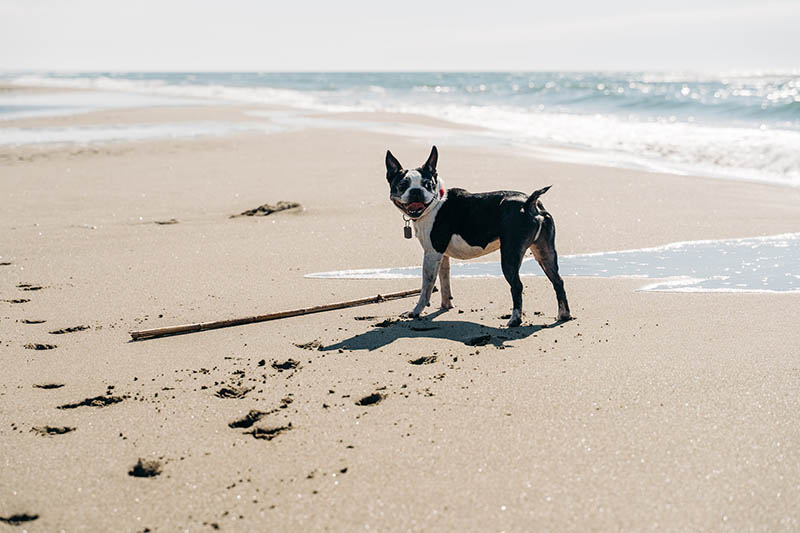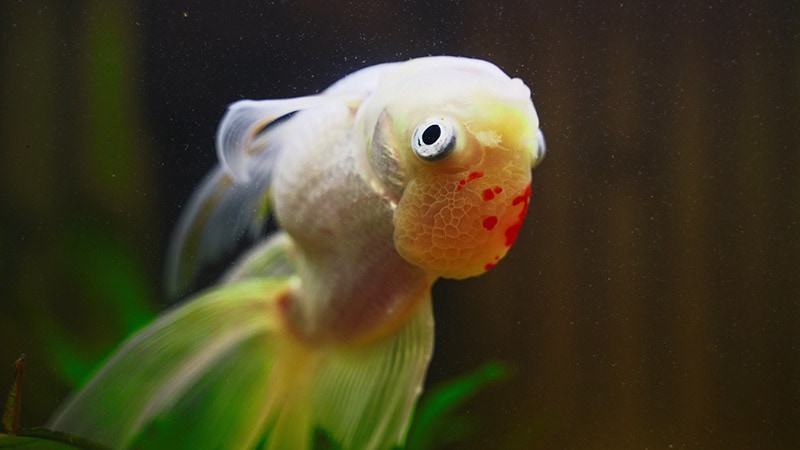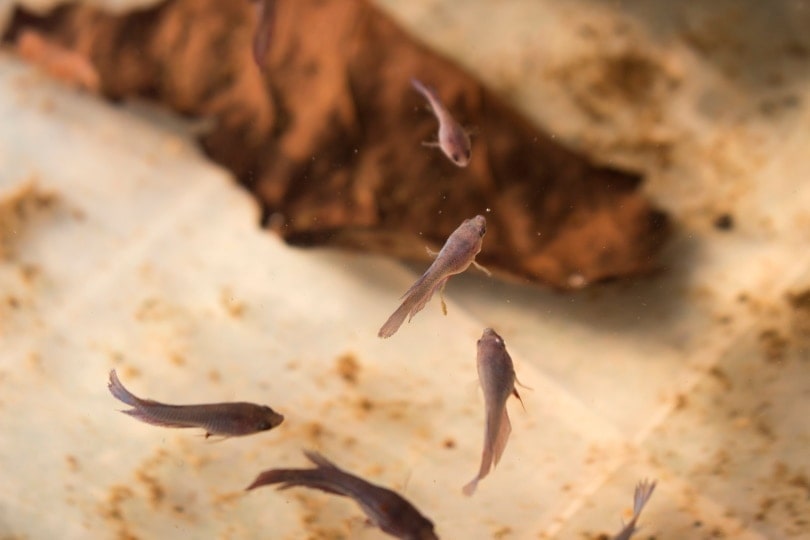Bulldog Tail Pocket: What They Are & How to Treat Them, Vet-Approved Health Info
Updated on
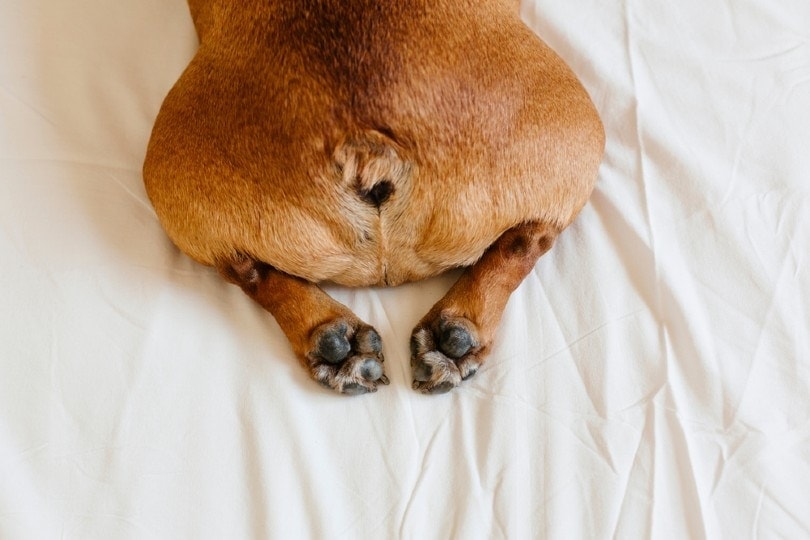
If you are an experienced Bulldog owner, you probably already know all about the tail pocket, but for those that are new to the Bulldog world, we’re here to give you the information you need. We’ll look at what a tail pocket is and where to find it. We’ll also discuss how to clean it and how to spot infection.
Infection of the skin folds and tail pockets in brachycephalic breeds always requires veterinary attention, so please use this article as a source of information, but do not mistake it as a replacement for direct veterinary advice. Brachycephalic breeds require a lot of dedication and care, so consult with your vet about the particular health issues your dog may be prone to developing.
What Is a Tail Pocket?
The tail pocket is essentially a small wrinkle found under your Bulldog’s tail, similar to the wrinkles found all over their face. It is commonly found hiding under your dog’s tail, but it can also be on top of the tail or extend all around the base of the tail like a ring. It is a small pocket area or a type of indentation covered and hidden by excess skin folds that can collect all kinds of dirt throughout your Bulldog’s day. It’s also an area prone to moisture development and accumulation and may be contaminated with feces.
A tail in many brachycephalic breeds is deviated and resembles a corkscrew, colloquially called “a screw tail,” and is prone to infection or tail fold pyoderma.
The tail pocket can be visible from an early age or become more pronounced as the puppy grows and develops into a young adult, depending on the appearance of the tail and the amount of skin folds and wrinkles. Not every Bulldog actually has a tail pocket, and not all tail pockets will cause equal levels of skin issues for the dog.
If you own a Bulldog, then you’ll need to learn what a tail pocket is, the other skin folds they might have (like facial skin folds), how to take care of them, and how to spot an issue early in order to be a responsible and proactive pet parent, particularly when it comes to brachys.
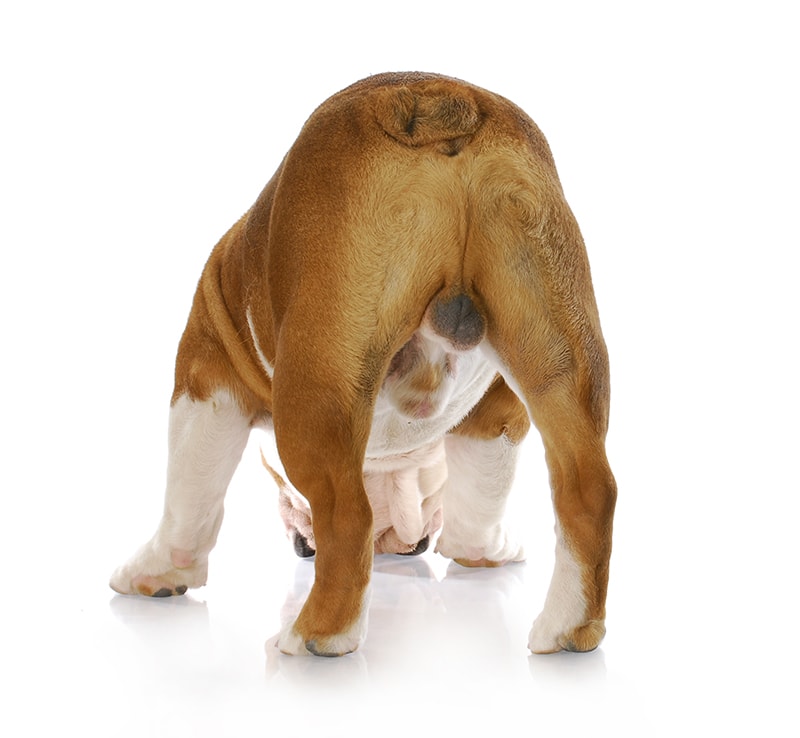
What Other Dogs Have a Tail Pocket?
It’s not only Bulldogs that have a little pocket under their tails. Pretty much every breed of Bulldog is prone to tail pockets – English, American, and French Bulldogs can all potentially develop one.
As a general rule, dogs with tight curly/corkscrew style tails are more likely to develop a tail pocket over dogs with straight tails. Some Pugs are also susceptible to developing the tail pocket, so it’s important if you have a wrinkled-faced dog to double-check for a tail pocket and discuss this with your veterinarian.
How to Find the Tail Pocket
This is the easy part. Before you start, always wear gloves, and don’t forget to wash your hands afterward. You just need to run your hand around your dog’s tail gently. While the tail pocket is usually under the tail, it can sometimes be found somewhere around the tail, including the top. This means if you don’t feel an indentation under the tail, keep checking.
It can be a ticklish/sensitive area for your dog, so they might do a little squiggling and dancing while you check. If you see and feel what looks like a small dimple or a pocket near the tail and hidden under the skin folds, chances are they have a tail pocket.
Why You Need to Keep the Tail Pocket Clean
For the same reasons you keep your Bulldog’s facial wrinkle folds clean, you also need to take care of this extra one around their butt. If you don’t keep it clean, it can cause a number of problems, such as:
- Infection, often chronic
- Irritation and swelling
- Sensitivity around the area
- Dry, flaky skin
- Stinky smell
- Overall discomfort for your dog
All of these issues are reason enough to keep your dog’s tail pocket clean. Sometimes there may be a bulldog tail pocket brown discharge, so now we’ll go over the methods on how to clean it.

How to Clean a Bulldog Tail Pocket
In most cases, you should clean the tail pocket every day, or at least several times a week. You could get into the habit of cleaning the tail pocket every time you clean their facial wrinkles. However, the tail pocket needs more attention than just giving it a quick wash during regular bath time.
- You can use wipes designed for dogs, baby wipes, or a soft cloth that is soaked in lukewarm water with a gentle, dog-safe skin antiseptic, such as dilute chlorhexidine wipes or saline solution (a hypoallergenic and antibacterial shampoo may work as well). Speak to your vet about the best wipes or products to use. Gently wipe around and inside the pocket to remove any debris and dirt. Continue removing the dirt by rinsing the cloth or using fresh wipes until the pocket is clean. Thoroughly rinse the pocket.
- Dry the area carefully with a soft and dry towel or cloth (microfiber would be perfect), both outside and inside the tail pocket. You can also consider using a blow dryer on a low, warm setting at a safe distance ,as you don’t want any dampness left behind. Be extremely careful, as you may cause skin burns if the dryer is too close to the skin.
- Many Bulldog owners use a wrinkle paste cream or wrinkle wax or vaseline, which are designed as a barrier cream to protect the folds on your Bulldog’s face and butt against bacteria, fungus, and excessive moisture. It can also soothe the area if it’s irritated.
Remember, this area is very sensitive for your Bulldog, so try to clean and wipe as gently as possible.
Signs That There’s a Problem With the Tail Pocket
- Brown, stinky fluid emanating from around your dog’s butt (could be anal glands, but it’s best to double-check that it isn’t coming from the tail pocket).
- Excessive scratching, licking, and biting near the tail pocket. Your Bulldog might start scooting (again, maybe anal glands, but it’s good to be sure).
- A stinkier than usual butt area.
- Extra sensitive tail and butt area.
- Pain and discomfort, particularly when passing feces or trying to sit down.
- Skin redness and swelling in the area.
- Lethargy and general signs of illness, such as reduced appetite.
Any of these signs warrant a prompt trip to your vet, as infection of the tail pocket or tail fold pyoderma is very uncomfortable for your dog and can easily lead to chronic and recurrent issues.
Bulldog Tail Infection
So, you suspect your Bulldog has an infection in their tail pocket, and you’re wondering what to expect from the veterinarian. The vet will clean the area and most likely send you home with topical medication, painkillers, and sometimes an oral antibiotic, depending on the extent of the issue. They may recommend taking bacterial and fungal culture swabs in order to identify the particular pathogen causing the infection, which will help them in choosing the appropriate antimicrobial treatment.
If there’s any yeast in the tail pocket, your vet might also prescribe antifungal medication for your Bulldog. It’s essential to remember to follow your vet’s instructions and give your dog all of the antibiotic and antifungal medications for the prescribed duration, even if your dog seems to be better. This will help to prevent the chance that an antibiotic-resistant infection might occur. Regular cleaning and hygiene of the area is crucial as well.
Preventing Tail Pocket Infections
Taking regular care of your Bulldog’s skin folds is the first and best step to prevent tail pocket infections. Keeping the area clean and dry should stop any infection from occurring or at least allow you to catch it early. However, if it seems to be an ongoing or chronic issue, you will need to speak to your vet about other treatment options.
Some tail pockets are just too tight and may be difficult to access because of the tail, so your veterinarian might recommend removing your Bulldog’s tail or part of it together with the pocket area through surgery. Your vet will explain the benefits and downsides of the procedure and what to expect afterward when it comes to cleaning the folds and managing the issue. This surgical approach should be considered if your Bulldog has frequent and severe infections that cannot be managed with cleaning and medical treatment and are causing your pooch constant pain and discomfort.
Conclusion
Okay, you can now call yourself an expert in the tail pocket. If you’re at all concerned about your Bulldog’s tail pocket, always consult with your vet for advice or treatment.
Be sure to check for a tail pocket if your Bulldog has just grown into an adult, and be prepared for a rather peculiar cleaning and grooming regimen. But doesn’t your Bulldog deserve the best treatment, anyway?
Featured Image Credit: eva_blanco, Shutterstock





